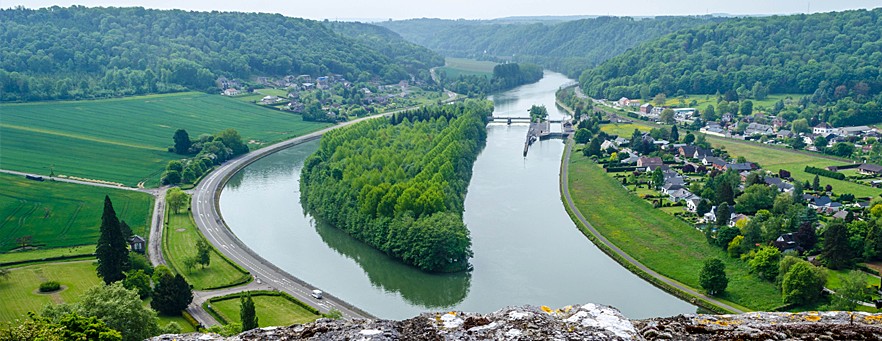

General Information About Yvoir
Yvoir is a commune in the province of Namur in the valley of the Meuse and located north of Dinant. It consists of 9 villages interrupted by farmland, green meadows and forests which gives the town a rural character which is likely to fascinate lovers of nature with the beauty of the countryside and fresh air. It has a rich history of which numerous castles and old buildings are witness.
Things to Do in Yvoir
Yvoir is situated at the confluence of the rivers Meuse and Bocq. Around the old center are still some buildings of the 17th and 18th century and in the beginning of the 20th century modern houses and villas where built around La Place des Combattants.
The town hall is located in an old seigneurial farm constructed around the 15th century. The office of tourism is just opposite.
The church is a classic building, built between 1761 and 1763 and enlarged in 1888.
The Castle of Bouvignes was built in the 18th century and used to be an old ironsmith’s house.
The fountain Meuse and Bocq remembers the time of the iron industry in which the two rivers played a major role. There is a stone statue of a naked woman, representing the Meuse, and a small boy, representing the Bocq.
The Isle of Yvoir is 2,5 hectare and can be reached by an automated ferryman boat. One part of the isle has been classified “Natura 2000” by the region of Wallonia. It is home to ducks and swans. The other part has a recreative function : all kind of watersports, a children’s paradise and a restaurant.
Places of interest
- Spontin
- Poilvache

The History and The Culture of Yvoir
The history of Yvoir goes back to the Neolitic era where a silex workshop was found in Tricointe. It was former name was Horex, which in Germanic means mud ground.As from the 14th century, Yvoir became the center of iron industry. There were about 12 ironworks. This made from Yvoir a modern and wealthy community. They were closed down in 1866 and changed into mills and sawmills. In this same period floodgates where built on the river and anthracite replaced charcoal. As the iron industry was slowing down, a new industry started up, namely the exploitation of sandstone quarries. They were very important given their rarity in Belgium, specially the blue stone.In 1976 Yvoir becomes the administrative center of 9 rural villages : Yvoir, Spontin, Durnal, Dorinne, Godinne, Evrehailles, Houx and Mont Purnode.




